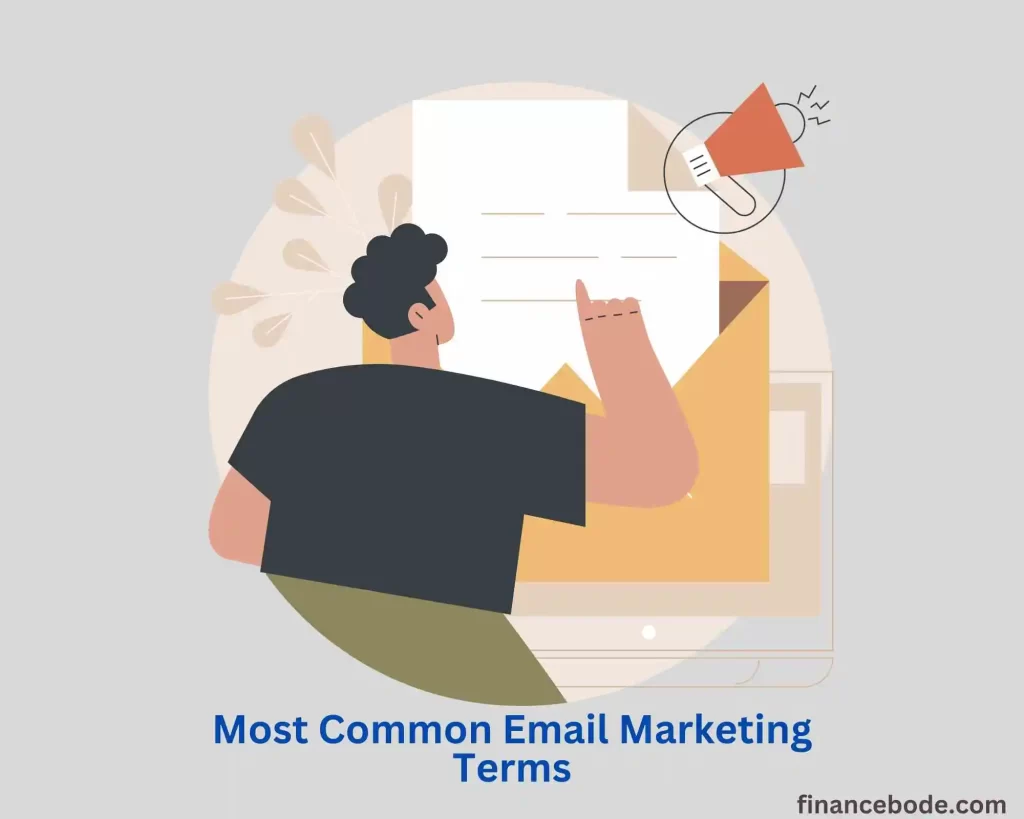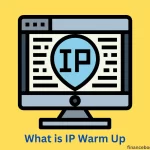Email marketing is an integral component of an entire digital marketing plan; For new marketers, this might be an elusive technique; But occasionally, even seasoned email marketers have to be regularly informed about some common terms in the email marketing sector.
Therefore, I have listed the 27 most common terms that are regularly seen and used while performing email marketing. Please spend 3 minutes reaffirming your fundamental knowledge about email marketing.
See also: Email marketing terminologies.
Common Terms Concerning Email Marketing Services
1. Email Service Provider (ESP) –
Email Service Provider is a software solution that allows marketers to deliver marketing information to the email addresses of prospective consumers who have joined up.
Currently, there are numerous respectable email marketing service companies around the globe. These might be mentioned like Getrespone, Mailchimp, Sendgrid, Amazon SES… ESP is a useful aid for organizations because of exceptional benefits such as:
- Build and maintain email lists of prospective consumers.
- Supports numerous email templates to modify the design to suit the recipient.
- Statistics to measure email open rates, click rates, bounced or complaint emails….
- Email automation.
See also:
2. Email Client –
Email Client is a computer software for accessing and managing a user’s email.
Popular mail clients include Outlook App, Windows Mail App, Apple Mail, and Mozilla Thunderbird….
3. Mail Server – Email Server
Mail Server, or Email Server: This is a system or program responsible for managing email communications. In a word, an Email Server will handle the task of receiving and delivering emails.
In addition to the capability of storing and managing Emails on the Internet, Mail Server also assures safety with excellent data recovery ability.
Learn more: What is Email Server?
4. Simple Mail Transfer Protocol (SMTP)
SMTP abbreviation is Simple Mail Transfer Protocol which implies Simple Mail Transfer Protocol. Mail servers use this fundamental standard to transmit emails to one another over the internet. To put it simply, SMTP is responsible for transmitting email messages across the internet.
Learn more: What is SMTP?
5. CAN-SPAM
CAN-SPAM is an English abbreviation that translates to “Attacking Control of Unsolicited Pornography and Marketing Act 2003”. This is the code that spells forth the regulations for business email. It defines rules for commercial communications, offers receivers the opportunity to seek a cease of testing, and lays out punishments for breaches of the Act.
Learn more: Email marketing laws.
6. Double Opt-In
Double Opt-In implies “double opt-in.” This Word must be no stranger to marketers undertaking email marketing. An individual wishing to join the list will need to go through two processes.
First, the user will give their details on the form. Next, they will get an email delivered to their inbox. Subscribers need to click on the link in the message to complete the confirmation of participation.
Double Opt-In is the ideal strategy for creating data. Because if you complete step one, many people will register a bogus address. Adding step two helps marketers pick out inactive emails. Thus, the acquired data will be of greater quality.
Opt-In or Subscribe
Agreeing to or subscribing to an email list means agreeing to receive email alerts. Users will give an email address on a form on a website or for a firm. And then, the corporation is permitted to email them.
Opt-Out or Unsubscribe (Opt-Out or Unsubscribe)
This is an option when the subscriber no longer wishes to receive emails from the sender and asks to be removed from the list. According to the legislation, the sender must always give an Opt-Out (Unsubscribe) expressly in the email so that the consumer may do so at any time.
Learn more:
7. Newsletter
A newsletter is an Email delivered regularly from marketer to subscriber. Content contains news, updates on a subject, new product features, relevant information for recipients, etc.
8. Transactional email
These are emails that are delivered to users shortly after they perform an action, such as Order Confirmation, Successful Registration, Welcome Email, etc.
9. HTML Email and Email Template
Email Templates are email templates intended not just to hold material and photos but to be displayed in an attractive, balanced manner. They are also known as HTML Emails.
HTML email is very different from email built on Word. The designer will need to utilize the code to develop the email template. Composing content in Word and then converting (converting) to HTML.
Common Terms Related To The Quality Of Email Marketing Campaigns
10. List Segmentation –
List Segmentation: Choose a target audience or group of persons relevant to your email. Segmented lists make email marketing more targeted and relevant. As a consequence, increased response rates, fewer unsubscribes, and more spam complaints.
See also: Email List Segmentation Guide.
11. Personalization –
Personalization is a prevalent phrase in email marketing. You’ll add aspects of personalization to your content depending on available information about the receiver. Maybe include the customer’s name, highlight their prior purchases, or other items they’re likely to be interested in.
See also: How to personalize the email.
12. Call to Action (CTA) –
A call to action (CTA) is a call to target consumers to do your desired action. In order for the subject to behave, you must thoroughly understand them, from portraits to requirements, obstacles …
See also:
13. Open Rate –
Open rate is one of the crucial terms to check to assess the quality of a marketing campaign. It is the ratio between the number of emails opened to the total number of emails sent.
See also: Email Open rate
14. Click-Through Rate (CTR) –
Click-through rate counts the number of times a receiver clicks on a given URL, picture, or CTA in an email relative to the number of times the email is opened.
Of course, click-through rates might vary by industry or campaign type. But the evidence that an email is functioning well is when the CTR is in the 20-30% area.
See also: Email click-through rate.
15. Conversion Rate –
Conversion Rate: The proportion of recipients who reacted to your call to action in an email marketing campaign. This is one of the indicators that assess the success of the campaign.
See also: Email conversion rate.
Common Terms Related To Email Authentication
16. Authentication – Authentication
Authentication refers to techniques for validating the sender’s identity. The objective is to guarantee that your outgoing email address is correct. As a consequence, the company’s brand and domain name’s reputation will escape being taken advantage of by bad people.
There are basically four methods of authentication that are crucial in email marketing. These are SPF, DKIM, Domain Keys, and Sender ID (Sender ID). SPF and DKIM are the most frequently recognized email authentication policies.
SPF – Sender Policy Framework
The sender policy structure stems from spam prevention approaches. This is a way of verifying the sender’s address based on examining whether the owner has permitted the incoming domain (domain) for the sender to use to send an email.
This strategy lets the receiver recognize whether the sender’s address is legitimate or fraudulent. From there, it is possible to prevent the spread of spam or online fraud.
DKIM
DKIM stands for Domain Keys Identified Mail. This is a way that helps confirm emails using the digital signature of the mailing domain. This helps to prevent faked emails.
The major initial goal of DKIM was established so that the receiver could identify the email originating from a given domain name, whether the domain name is legitimate, permitted, or not.
Besides, DKIM also has the capacity to prevent fraudulent email addresses. This function has been utilized a lot lately, especially with phony letters, phishing communications, spam emails with harmful programs, etc.
Domain-based Message Authentication, Reporting & Conformance (DMARC)
DMARC — Domain-based notification authentication, reporting, and compliance. This is an email authentication protocol. It is developed on top of the two protocols stated above, SPF and DKIM.
DMARC offers reporting capabilities that help senders and receivers to enhance and monitor domain security against phishing emails. All major mailbox providers utilize, such as Outlook.com, Gmail, and Yahoo Mail.
17. Domain Name System (DNS) –
DNS stands for Domain Name System. This is the domain name resolving system. It may help convert the domain to IP form and vice versa from IP to the domain name.
When you put any domain name into the search box on your browser, you gain instant access to the website without having to enter the IP address of that site. Because the procedure of converting from domain names to IP addresses has been taken care of by DNS. Thanks to it, consumers will only need to remember the domain name, not the IP address of the website.
DNS plays a part in the SPF validation stage in the email domain. Mailbox providers, using domain name system matching, will verify whether the IP the sender uses is in the list of IPs approved by the sending domain owner.
For example, I used the Financebode Email program and configured the outgoing email address to Bode@financebode.com. When the email arrives at the receiver, the receiving server checks to see which IP address I am sending the email from.
At the same time, extract data from financebode.com’s DNS. The objective is to verify whether the list of fiancebode.com domains includes which IPs are permitted to use to transmit. If my IP address is in the DNS list, the email I send will be authorized by the receiving server and sent to the recipient’s mailbox.
Common Terms Related To Email Deliverability
18. Sender Score –
This is a 0-100 reputation rating for every outgoing server IP address. The mail server will examine your Sender Score before opting to handle your email. Scores over 90 are excellent.
Learn more: Sender Score Concepts.
19. Blacklist – Blacklist
This is a list of all IP addresses that transmit spam, irritate recipients, and are recognized as spam. If you are banned, your sending reputation will be significantly lowered. This substantially impacts email deliverability.
See also:
• How to sanitize the email list to prevent getting blacklisted.
20. Whitelist –
In contrast to Blacklist, a whitelist comprises permitted IP addresses for sending emails to recipients.
21. IP Warmup –
Warmup IP is basically the process of sending emails in increasing quantities from an IP address. The objective is to progressively enhance the reputation of that IP in the eyes of spam filters and ISPs if you are utilizing a domain email to execute the marketing campaign.
22. Email Filter – Email Filter
Email Filtering is a method used to stop spam based on an email’s sender, subject line, or content.
23. Dedicated IP –
In email marketing, the phrase dedicated IP refers to an IP address only you or the organizations you have authorized can use to send an email.
24. Shared IP –
A less costly choice than a dedicated IP address is a shared IP. This is the IP address that several individuals use to send an email.
25. Spam Trap –
Spam Traps (sometimes known as Honeypots) detect and monitor spam emails.
Anti-spam groups, Internet service providers (ISPs), and enterprises utilize spam traps to discover spammers. By the manner they develop and put trap email addresses all over the place. It is conceivable that by mistake, your customer list contains this “trap” address.
When you send marketing, these organizations will get your letter. And they spam your IP address or even your domain name as Blacklist. This impacts the company’s reputation and email delivery procedure.
See also: What is a Spam Filter?
26. Complaint rate –
A complaint is a stage when receivers identify or mark your email as Spam/Spam.
Complaints are represented as a percentage. It is estimated based on the complaints received relative to the number of emails sent in the same campaign.
The complaint rate should be kept at less than 0.1%.
27.Bounce Rate –
Email Bounce implies emails that the server has sent but, for some reason, cannot be delivered to the recipient and are bounced.
The bounce rate reveals how excellent or poor your email list is. It has a huge influence on the sender’s reputation. This is one of the most significant KPIs in an email marketing campaign. An acceptable bounce rate is less than 5%.
Bounced emails are separated into two types:
• Hard Bounce
• Soft Bounce
Hard Bounce – Hard Return, Permanent Return
A hard Bounce is an email delivered but bounces and no longer forwarded to the receiver. The typical reasons are that the recipient’s email address is invalid, no longer in use, or banned.
Soft Bounce – Light Bounce, Temporarily Bounce
A little bounce is an email delivery that failed to owe to a brief glitch. For example, the recipient’s inbox is full, or the service is unavailable…
See also: What is email bounce?
Conclusion
I believe this post has updated you with significant phrases in the email marketing industry. As a marketer, you need to equip and reinforce the essentials. A strong foundation can help you optimize your advertising plan better.
See also: Which industry should use email marketing
Good luck!





